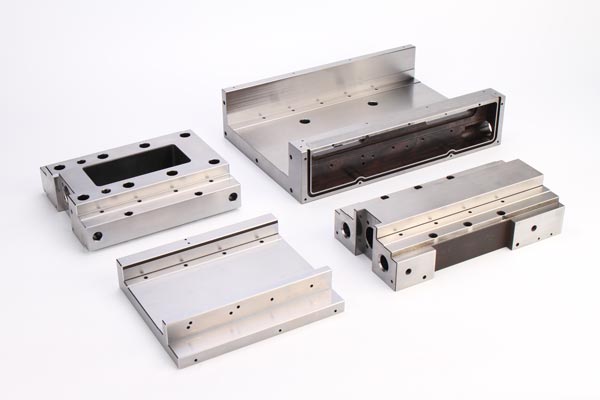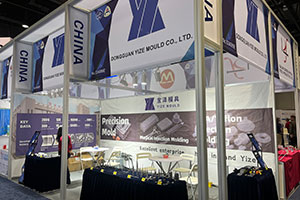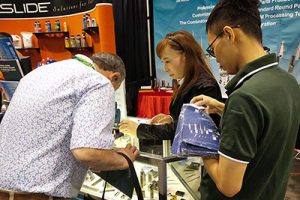Analysis of the Impact of Lubricant Selection on the Service Life of Tungsten Carbide Dies
I. Introduction In the manufacturing industries such as metalworking and plastic molding, tungsten carbide dies are widely applied due to their high hardness, excellent wear resistance, and superior heat resistance. […]
I. Introduction
In the manufacturing industries such as metalworking and plastic molding, tungsten carbide dies are widely applied due to their high hardness, excellent wear resistance, and superior heat resistance. However, during long – term use, due to the friction and wear between the die and the workpiece, the accuracy of the die decreases, the surface roughness increases, and even cracks or fractures may occur, thereby shortening the service life of the die. As an important auxiliary material, lubricants play a crucial role in reducing friction, minimizing wear, and extending the service life of dies during the die – using process. Therefore, selecting the appropriate lubricant is of utmost importance for ensuring the service life of tungsten carbide dies. This article will conduct a detailed analysis from the aspects of the lubricant’s action mechanism, selection principles, and its impact on the service life of tungsten carbide dies.
II. The Action Mechanism of Lubricants
Lubricants mainly play the following roles in the die – machining process:
Our factory business: carbide parts, mold parts, medical injection molds, precision injection molds, teflon PFA injection molding, PFA tube fittings. email: [email protected],whatsapp:+8613302615729.
- Reducing the friction coefficient: Lubricants can form a lubricating film between the die and the workpiece, reducing direct contact between the two, thus lowering the friction coefficient and decreasing the heat and wear generated by friction.
- Cooling effect: During the lubrication process, lubricants can carry away part of the heat generated by friction, reducing the temperature of the die and minimizing thermal deformation and oxidative wear caused by high temperatures.
- Cleaning effect: Lubricants can wash away impurities and cutting chips on the surface of the die, keeping the die surface clean and reducing wear caused by impurities.
- Rust – prevention and corrosion – resistance effect: Some lubricants have rust – prevention and corrosion – resistance functions, which can form a protective film on the die surface to prevent the die from rusting and corroding.
III. Principles for Selecting Lubricants
Selecting the appropriate lubricant requires consideration of the following aspects:
- Die material: Different die materials have different requirements for lubricants. Tungsten carbide dies, characterized by high hardness and excellent wear resistance, require lubricants with good lubricating performance and anti – wear performance.
- Machining material: The properties of the machining material also affect the selection of lubricants. For example, when machining high – hardness materials, lubricants with high extreme – pressure and high anti – wear performance need to be selected.
- Machining conditions: Machining conditions include cutting speed, feed rate, and cutting depth. Under high – speed cutting or heavy – duty cutting conditions, lubricants with good heat resistance and extreme – pressure resistance need to be selected.
- Environmental protection requirements: When selecting lubricants, environmental protection requirements also need to be considered. Priority should be given to environmentally friendly lubricants that are non – toxic, odorless, and easily biodegradable to reduce the impact on the environment.

IV. The Impact of Lubricants on the Service Life of Tungsten Carbide Dies
Selecting the appropriate lubricant has a significant impact on the service life of tungsten carbide dies. Specifically, the following aspects need to be focused on:
- Reducing friction and wear: Appropriate lubricants can form a stable lubricating film between the die and the workpiece, reducing the friction coefficient and the degree of wear, thereby extending the service life of the die.
- Lowering the temperature: Lubricants can carry away part of the heat generated by friction, reducing the temperature of the die and minimizing thermal deformation and oxidative wear caused by high temperatures. This helps maintain the dimensional accuracy and surface quality of the die and improve its service life.
- Cleaning and protective effects: Lubricants can clean impurities and cutting chips on the surface of the die, keeping the die surface clean. At the same time, some lubricants have rust – prevention and corrosion – resistance functions, which can form a protective film on the die surface to prevent the die from rusting and corroding. This also helps extend the service life of the die.
However, if an inappropriate lubricant is selected, it may have a negative impact on the service life of tungsten carbide dies. For example, using a lubricant with poor lubricating performance will increase the friction between the die and the workpiece, exacerbating wear; using a lubricant with poor heat resistance will easily fail under high – temperature conditions, leading to thermal deformation and oxidative wear of the die; using a lubricant with poor environmental performance may pollute the environment, affecting the corporate image and market competitiveness.
V. How to Select the Appropriate Lubricant
To select the appropriate lubricant, the following aspects can be considered:
- Understanding the characteristics of the die and machining material: Select lubricants with corresponding properties according to the properties of the die material and machining material. For example, for tungsten carbide dies and the machining of high – hardness materials, lubricants with high extreme – pressure and high anti – wear performance need to be selected.
- Considering machining conditions: Select the appropriate lubricant according to the machining conditions. Under high – speed cutting or heavy – duty cutting conditions, lubricants with good heat resistance and extreme – pressure resistance need to be selected.
- Evaluating the environmental protection performance of lubricants: Priority should be given to environmentally friendly lubricants that are non – toxic, odorless, and easily biodegradable to reduce the impact on the environment.
- Referring to industry experience and professional advice: You can refer to the experience of the same industry and the advice of professionals to understand the performance and application scope of various lubricants, so as to make a more appropriate choice.
VI. Conclusion
Selecting the appropriate lubricant is of great significance for ensuring the service life of tungsten carbide dies. By comprehensively evaluating factors such as the characteristics of the die and machining material, machining conditions, the environmental protection performance of lubricants, and referring to industry experience and professional advice, the appropriate lubricant can be selected. Appropriate lubricants can reduce friction and wear, lower the temperature, clean and protect the die surface, thereby extending the service life of tungsten carbide dies. Therefore, in practical applications, full attention should be paid to the selection and use of lubricants to ensure the stable operation and efficient production of dies.






